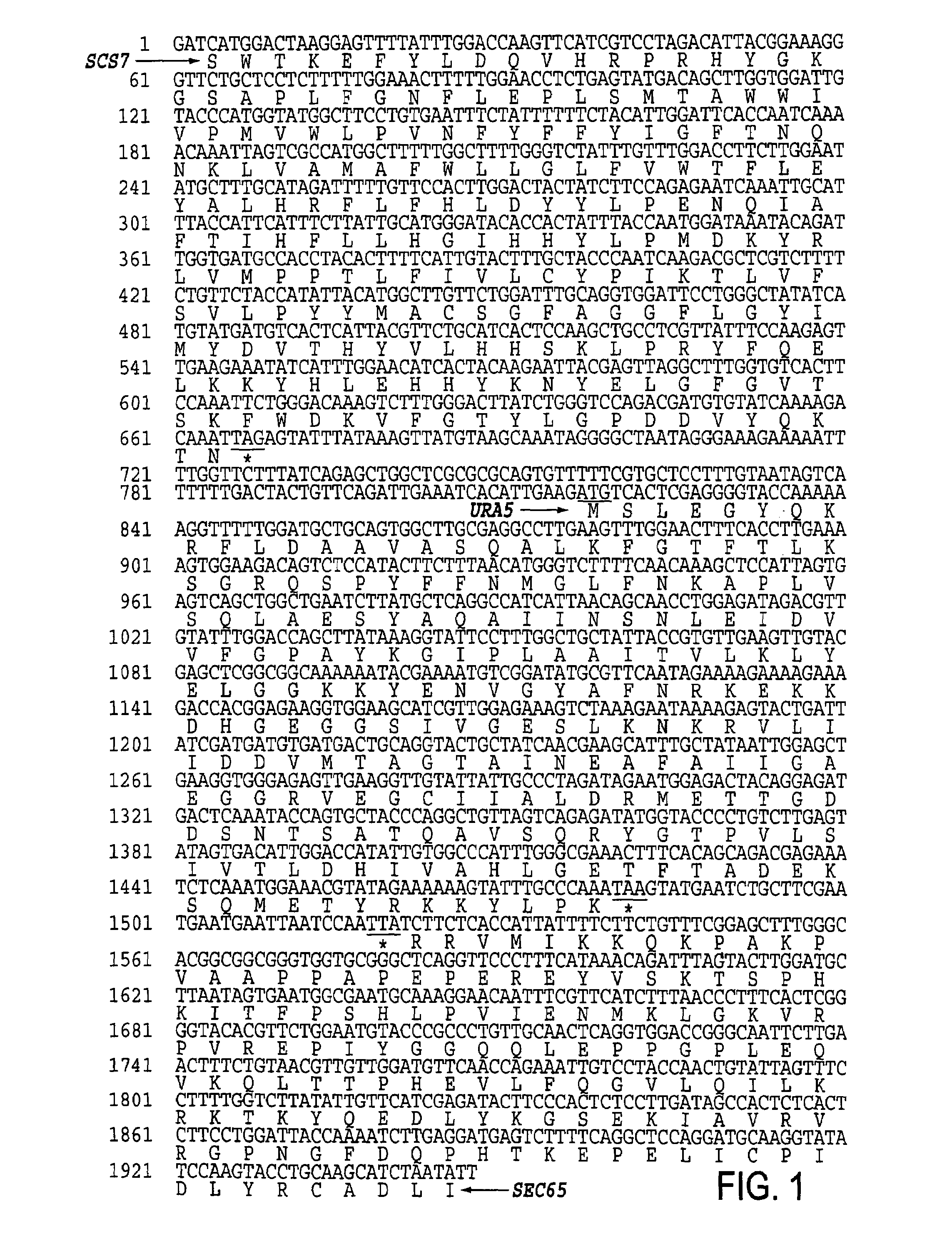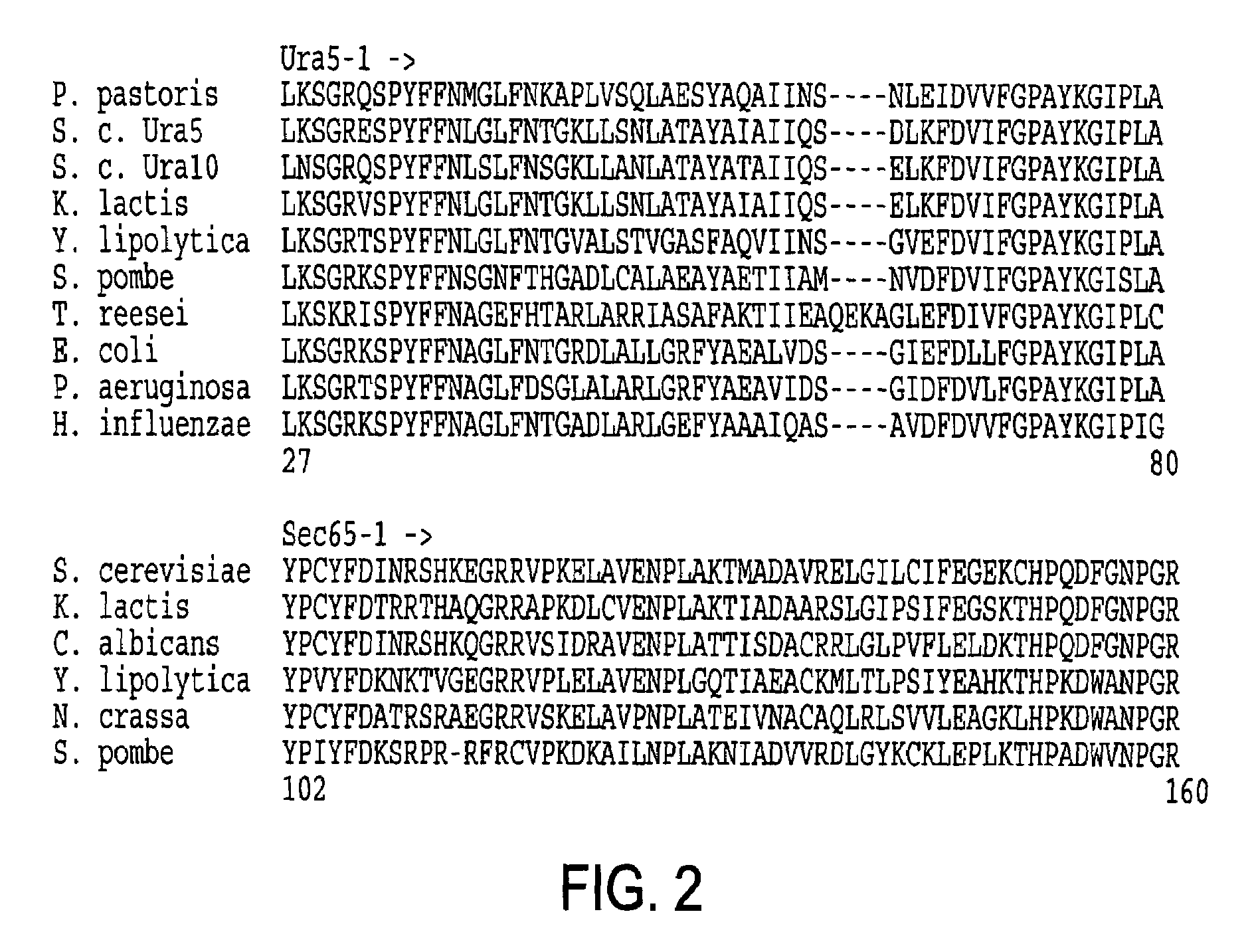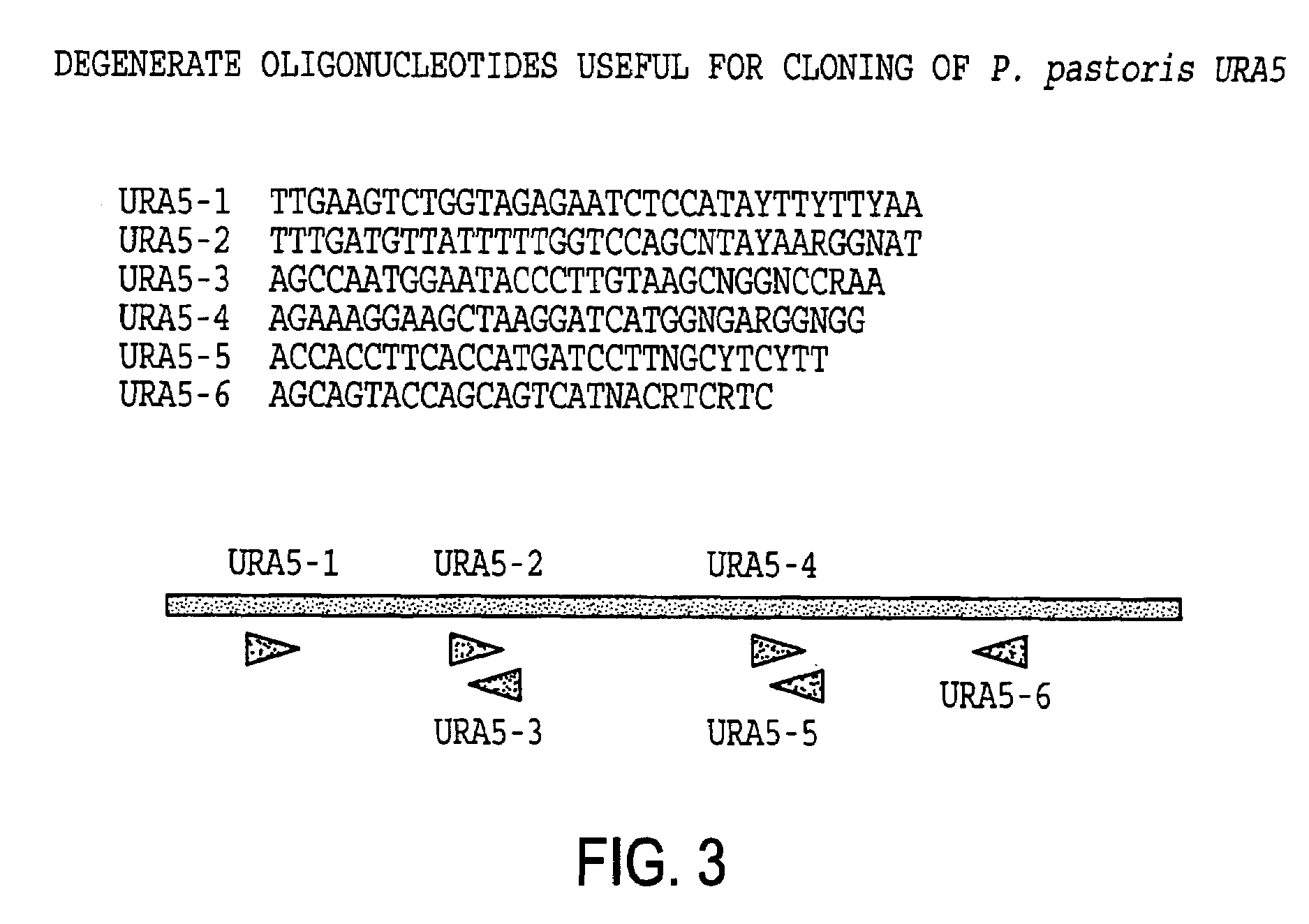URA5 gene and methods for stable genetic integration in yeast
a genetic integration and stable technology, applied in the field of new genes, can solve the problems of the likelihood of genetic material being lost by the pop-out, and the toxicity of the t-urf13 gene,
- Summary
- Abstract
- Description
- Claims
- Application Information
AI Technical Summary
Benefits of technology
Problems solved by technology
Method used
Image
Examples
example 1
General Materials and Methods
[0122]Escherichia coli strain DH5α (Invitrogen, Carlsbad, Calif.) was used for recombinant DNA work. P. pastoris strains NRRL Y-11430 (wild-type) and JC308 (ade1 arg4 his4 ura3) (Lin Cereghino et al., Gene 263:159-169 (2001)) were used for construction of yeast strains. PCR reactions were performed according to supplier recommendations using either ExTaq (TaKaRa, Madison, Wis.), Taq Poly (Promega, Madison, Wis.) or Pfu Turbo (Stratagene, Cedar Creek, Tex.). Restriction and modification enzymes were from New England Biolabs (Beverly, Mass.) or Promega.
[0123]PCR analysis of the modified yeast strains was as follows. A single colony was resuspended in 100 μl breaking buffer (100 mM NaCl, 10 mM Tris, pH 8.0, 1 mM EDTA). After addition of 100 mg of acid washed glass beads and 100 μl of phenol-chloroform, the solution was vortexed for 1 min. The mixture was then centrifuged for 5 min at full speed in a microcentrifuge, the supernatant recovered, and the genomi...
example 2
Disruption of the P. pastoris URA5 Gene
[0127]The cloned URA5 gene, together with gene-specific primers, may be used to generate a construct to disrupt the URA5 gene from the genome of P. pastoris. Host cells with a disrupted URA5 gene were created using a P. pastoris URA5 disruption cassette as follows.
[0128]A 1.5 kb Sac, XbaI fragment containing the kanamycin-resistance gene of transposon Tn903 was excised from plasmid pUG6 (Güldener et al., Nucleic Acids Res. 24:2519-2524 (1996)) and cloned into the SacI, XbaI sites of pUC19 (New England Biolabs, Beverly, Mass.) resulting in pJN374. Oligonucleotides Ura5-55 (GGGATATCGGCCTTTGTTGATGCAAGTTTTACGTGGATC ) (SEQ ID NO:30) and Ura5-53p (GCGATATCGGTGAAAGTTCCAAACTTCAAGGCCTGCGAAG) (SEQ ID NO:31) were used to amplify a region upstream of the URA5 ATG using P. pastoris genomic DNA as a template and Pfu Turbo DNA polymerase. The resulting DNA fragment was cut with EcoRV and cloned into the EcoICRI site of pJN374. The resulting plasmid was then d...
example 3
Construction of a Set of Vectors for the Stable Genetic Modification of P. pastoris
[0130]A set of vectors useful for stable gene replacement in Pichia pastoris was constructed as described below. Based on the high copy vector pUC19 (Yanisch-Perron et al., Gene 33:103-119 (1985)), a set of modular plasmids was assembled that, after a few simple subcloning steps, may be used to replace any P. pastoris gene with a heterologous gene of interest under the control of the strong P. pastoris GAPDH promotor. Plasmid pJN266 (FIG. 4) consists of two fragments homologous to the 5′ and 3′ regions of the P. pastoris KEX1 gene. These segments flank a P. pastoris GAPDH promotor, a S. cerevisiae CYC1 transcriptional terminator expression cassette (“CYC1 TT”) and a S. cerevisiae URA3 auxotrophic marker cassette. All regions of this plasmid are flanked by multiple restriction sites and can be individually replaced. The expression cassette contains a multiple cloning site for the insertion of heterolo...
PUM
| Property | Measurement | Unit |
|---|---|---|
| Tm | aaaaa | aaaaa |
| temperatures | aaaaa | aaaaa |
| dissociation constant | aaaaa | aaaaa |
Abstract
Description
Claims
Application Information
 Login to View More
Login to View More - R&D
- Intellectual Property
- Life Sciences
- Materials
- Tech Scout
- Unparalleled Data Quality
- Higher Quality Content
- 60% Fewer Hallucinations
Browse by: Latest US Patents, China's latest patents, Technical Efficacy Thesaurus, Application Domain, Technology Topic, Popular Technical Reports.
© 2025 PatSnap. All rights reserved.Legal|Privacy policy|Modern Slavery Act Transparency Statement|Sitemap|About US| Contact US: help@patsnap.com



